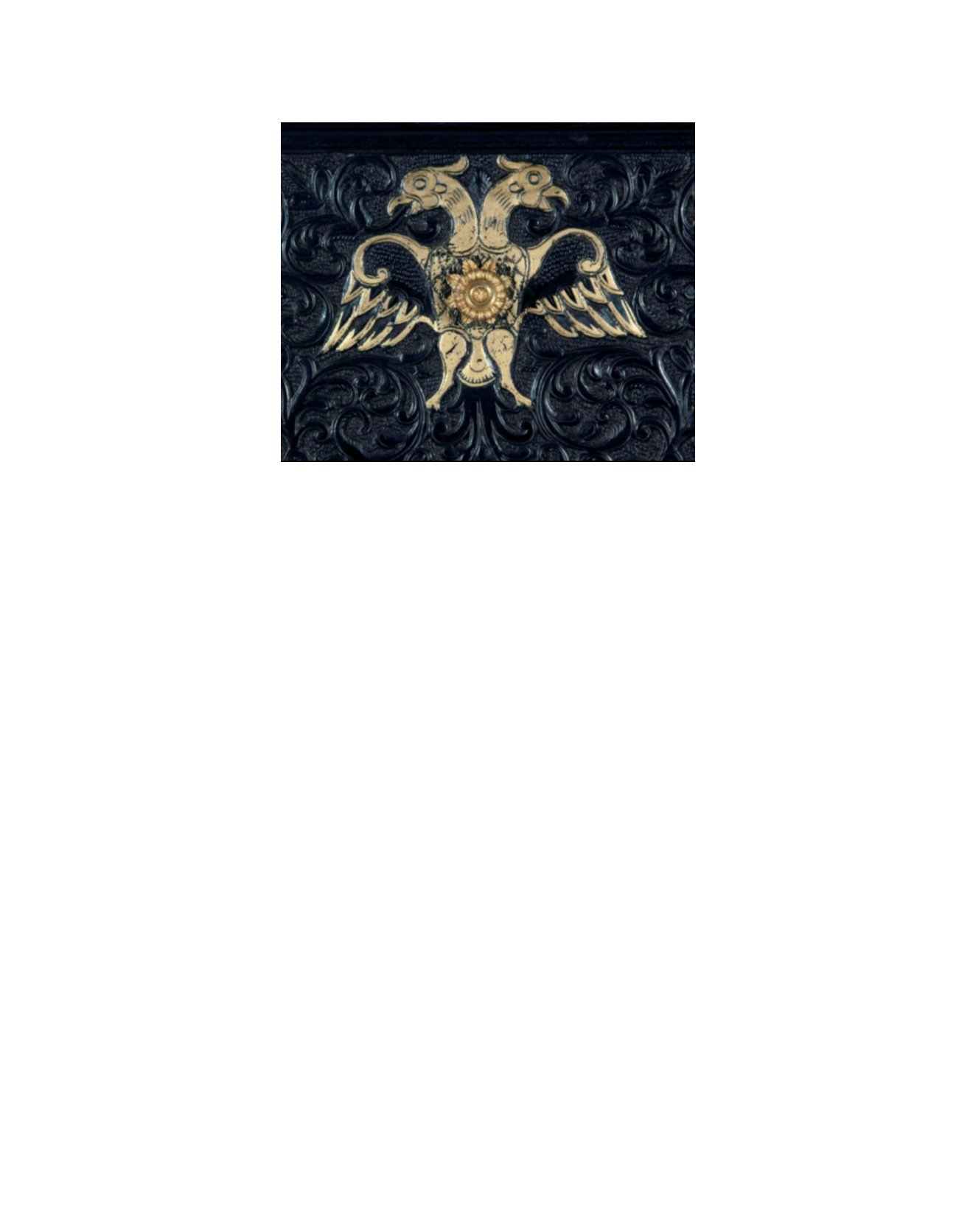
 116 A SOUTH INDIAN CARVED EBONY AND BRASS MOUNTED TWO DOOR CABINET ON
116 A SOUTH INDIAN CARVED EBONY AND BRASS MOUNTED TWO DOOR CABINET ON
STAND,
basically 18th century, the quarter fielded panel doors opening to reveal an interior fitted with central
cupboard, itself enclosing further drawers, and flanked by drawers and pigeon holes, the entire flat carved with foliage
and with plain and gilded winged eagles and the Gandaberunda (Berunda) bird - the royal emblem of the Tipu Sultan
Mysore, fitted with later circular knop handles and surmounted with a brass gallery rail, raised on a base fitted with two
long drawers above a scroll apron and lower shelf, on turned feet.
116cm wide x 148cm high x 62cm deep
€ 4,000 - 6,000
This cabinet has come from an Irish country house where it has been in situ for several decades. It was introduced into
that household through an English relative but sadly no more information regarding its provenance is available.
The symbolism in the decoration is hugely interesting and points to south Indian origin. The flat chased foliage which
adorns the entire cabinet hides a number of carved depictions of eagles and more interestingly, the ‘Gandaberunda’ or
‘Berunda’ as it is also known.
The Gandaberunda is a two-headed mythological bird thought to possess magical strength. It formed the royal em-
blem of the Wodeyaar Kings of the princely state of Mysore, in Karnataka.Tipu Sultan (1750-1799), also known as the Ti-
ger of Mysore, Dipu Sultan and Tipu Sahib was a ruler of the Kingdom of Mysore from 1782 to 1799. He was the eldest
son of Sultan Hyder Ali of Mysore. Tipu introduced a number of administrative innovations during his rule, including his
coinage, a new Mauludi lunisolar calendar, and a new land revenue system which initiated the growth of the Mysore
silk industry. Tipu expanded the iron-cased Mysorean rockets and wrote the military manual Fathul Mujahidin and was
considered a pioneer in the use of rocket artillery. He deployed the rockets against the advances of British forces and
their allies in their 1792 and 1799 Siege of Srirangapatna. During Tipu’s childhood, his father rose to take power in
Mysore, and upon his father’s death in 1782, Tipu succeeded to a large kingdom bordered by the Krishna River in the
north, the Eastern Ghats in the east, and the Arabian Sea in the west. He won important victories against the British
in the Second Anglo-Mysore War, and negotiated the 1784 Treaty of Mangalore with them after his father Hyder Ali
suddenly died from cancer in December 1782 during the Second Anglo-Mysore War.
Tipu engaged in expansionist attacks against his neighbours. He remained an implacable enemy of the British East
India Company, bringing them into renewed conflict with his attack on British-allied Travancore in 1789. In the Third
Anglo-Mysore War, Tipu was forced into the humiliating Treaty of Seringapatam, losing a number of previously
conquered territories, including Malabar and Mangalore. He sent emissaries to foreign states, including the Ottoman
Turkey, Afghanistan, and France, in an attempt to rally opposition to the British. In the Fourth Anglo-Mysore War, the
combined forces of the British East India Company and the Nizam of Hyderabad defeated Tipu, and he was killed on 4
May 1799 while defending his fort of Srirangapatna.
Even after five centuries since its first usage in the mints for making coins during the period of the Vijayanagar Empire
around 1510, the Gandaberunda is still flying high as the official insignia of the State of Karnataka.



















